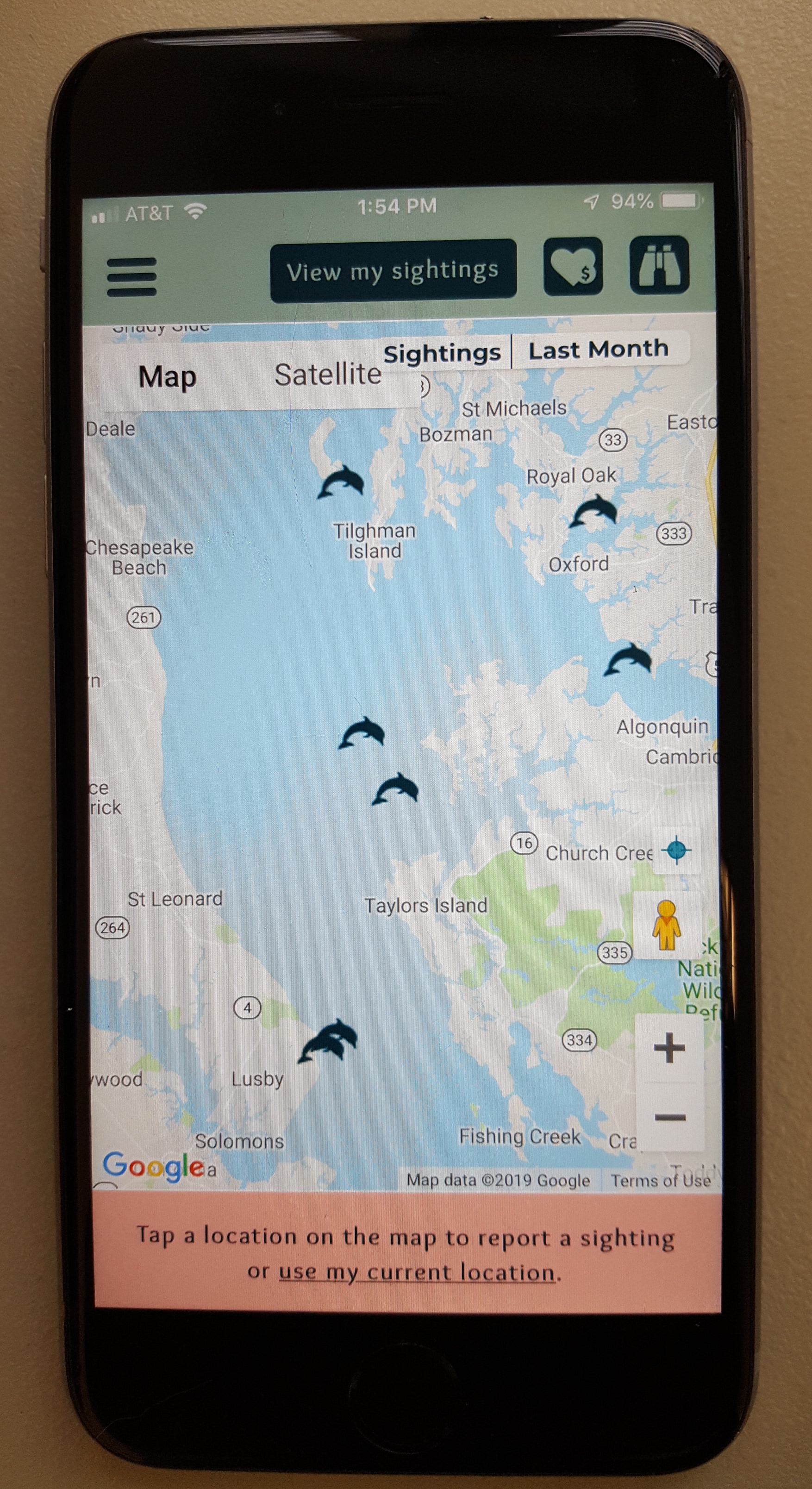The University of Maryland Center for Environmental Science’s Chesapeake DolphinWatch app is back for the 2019 summer season with new features, including the ability to upload videos of dolphins spotted on the bay by citizen scientists. The Chesapeake DolphinWatch app allows users to mark the location of dolphin sightings on a map of the Chesapeake and its tributaries so scientists can better understand where the dolphins are and where they go.
Last year more than 1,100 sightings were reported, and more than 4,000 people logged on to use the Chesapeake DolphinWatch app, which is available for iPhone and Android and also online at www.chesapeakedolphinwatch.org.

“There is something about dolphins that really captivates everyone,” said Helen Bailey, a scientist at the University of Maryland Center for Environmental Science’s Chesapeake Biological Laboratory. She specializes in studying the movements of marine mammals. “Whether you’re at home, whether you have a community pier, you live near the water, or you go out on the water, we need your eyes on the sea telling us about the dolphins.”
Bottlenose dolphins are frequently spotted in the Chesapeake Bay during the summer with reports of them leaping in the air or bow riding boats. However, very little is known about how often dolphins actually come into the Bay, how long they spend there, what areas of the Bay they are using and why.
“We were hearing occasional reports of dolphins in the Chesapeake Bay, but we really didn’t have much information about where they are going and when,” said Bailey. “The more eyes we have on the water the better to report dolphin sightings. We think that members of the public can make very good citizen scientists.”

The Chesapeake DolphinWatch app has four main sections. There is a map where users can see all of the reported sightings and tap to report their own sighting. Users can either enter the location where they saw the dolphins or have the device use the current location to mark their location. There is also an information section with responsible wildlife viewing guidelines and to learn more about dolphins and the Chesapeake Bay.
New features this year include a section where users can listen to dolphin calls recorded on underwater microphones in the Chesapeake Bay and a feature that allows dolphin watchers to upload a video of a dolphin sighting and view photos and videos of confirmed sightings.
Bailey notes that changes in climate, improvements in water quality, and improvements in fish stocks upon which dolphins feed could be factors in a surge in dolphin sightings. She and her research team have been placing underwater microphones in the Patuxent and Potomac Rivers where they meet the Chesapeake Bay listening for the echolocation click sounds dolphins make. The data collected through Chesapeake DolphinWatch will help inform where to put more devices to help understand where the dolphins are going and where they are feeding.
Scientists are also raising $500 to buy a real-time underwater microphone to monitor for dolphins that the public could then listen to on the app. More information on the Chesapeake DolphinWatch program and how to help is available at www.umces.edu/dolphinwatch. Tag your photos of dolphins to @dolphinwatch_cb on Instagram.
Funding for Chesapeake DolphinWatch was provided by the Chesapeake Bay Trust, Tracks Software, and the Chesapeake Biological Laboratory.

